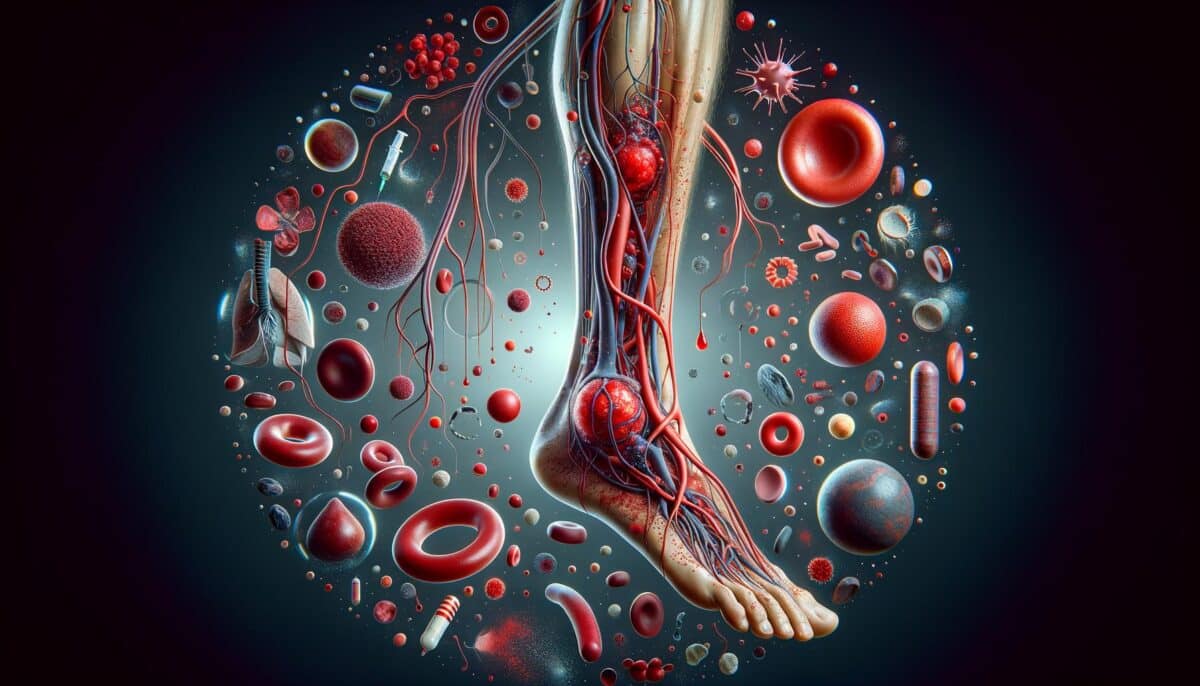What is a Leg Blood Clot?
A leg blood clot, scientifically known as deep vein thrombosis (DVT), occurs when a blood clot forms in one or more of the deep veins in your legs. This condition can be serious because blood clots in your veins can break loose, travel through the bloodstream, and lodge in the lungs, blocking blood flow. While DVT can develop without any warning signs, understanding its nature is crucial. Recognizing the symptoms early can prevent further complications and promote timely medical intervention. This blog aims to shed light on leg blood clots and how important awareness is for your health.
Common Leg Blood Clot Symptoms
Identifying leg blood clot symptoms promptly can reduce the risk of further advancement of the clot. Key signs to look out for include:
- Swelling in the affected leg, including the ankle and foot.
- Pain in the leg that often starts in the calf and can feel like cramping or soreness.
- Unexplained pain extending to the foot or ankle.
- Warmth in the area that is painful or swollen.
- Red or discolored skin on the leg.
These symptoms might seem benign at first, as they often mimic those of other less serious conditions. However, if you notice these signs, especially if they occur suddenly or are severe, it’s crucial to seek medical attention immediately.
Risk Factors Associated with Leg Blood Clots
Understanding the risk factors can aid in prevention and early detection of leg blood clots. Those at higher risk include individuals who:
- Have a family history of blood clots or a personal history of previous clots.
- Are over the age of 60, as risk increases with age.
- Are overweight or obese, which puts more pressure on veins in the legs and pelvis.
- Are sedentary for extended periods, such as during long car or plane trips.
- Take certain medications, such as hormone replacement therapy or birth control pills.
Recognizing these factors and discussing them with your healthcare provider can be an effective strategy for prevention and maintaining vascular health.
Preventive Measures and Lifestyle Adjustments
Prevention is crucial when dealing with leg blood clots, especially for those who are at higher risk. Some lifestyle modifications and preventive strategies can significantly reduce the likelihood of developing a clot. Consider the following measures:
- Engage in regular physical activity, such as walking or swimming, to improve circulation.
- Maintain a healthy weight through a balanced diet and regular exercise.
- Avoid long periods of immobility, and take short walks or stretch at regular intervals during extended travel or desk work.
- Stay hydrated to help maintain optimal blood viscosity and circulation.
- Wear compression stockings if advised by a healthcare professional, especially if you’re at risk or have had a blood clot previously.
Proactively incorporating these preventive measures into your lifestyle can help minimize the risk and ensure better overall vascular health.
Diagnosis and Treatment Options
Leg blood clots require prompt diagnosis and treatment to prevent complications, such as pulmonary embolism. Healthcare providers often employ several tests to diagnose a DVT, including ultrasound imaging, blood tests measuring levels of D dimer, venography, or MRI if necessary. Once diagnosed, treatment commences to prevent the clot from enlarging and to minimize the risk of pulmonary embolism. Treatment options often include:
- Medications, such as anticoagulants, also known as blood thinners, to prevent clots from forming or enlarging.
- Thrombolytics, or clot busters, in severe cases, administered directly into the clot through a catheter.
- Use of compression stockings to relieve symptoms and prevent swelling.
- In some instances, surgical procedures, such as inserting a filter into the vena cava, to prevent blood clots from reaching the lungs.
Proper management and treatment not only address the current health issue but also work towards preventing future occurrences.
In Summary: Prioritizing Health and Awareness
Awareness and understanding of leg blood clot symptoms are essential for timely diagnosis and treatment. By recognizing the signs early, discussing risk factors with healthcare providers, and implementing preventive measures, individuals can reduce their risk significantly. Leg blood clots are a serious medical condition, but with proactive measures and proper medical guidance, complications can be effectively managed. Remember, your health is your utmost priority; pay attention to your body’s signals and seek medical attention when necessary.
